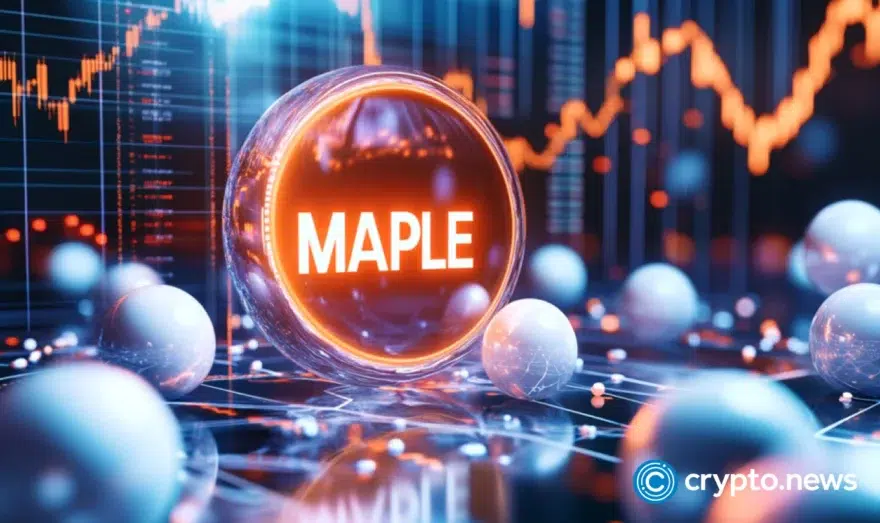Warning to builders: L2s are leaking value, L1 appchains are the smarter bet | Opinion
Disclosure: The views and opinions expressed here belong solely to the author and do not represent the views and opinions of crypto.news’ editorial.
Layer-2 chains were supposed to be the next evolution of blockchain scalability, and in some ways, they delivered. They made transactions faster and cheaper, helped projects scale rapidly, and gave Ethereum (ETH) room to breathe amid a surge in network activity. But as the dust settles, one uncomfortable truth has become hard to ignore: L2s don’t retain the value they generate. Instead, they leak it back to the parent chain, back to the liquidity hubs, and back to governance structures that were never really theirs to begin with.
You might also like:Math meets humanity where web3 needs it most | Opinion
This might not have been a problem in 2021, when projects raced to achieve speed and scale above all else. But we’re in a different cycle now, and the number of projects competing for users has increased exponentially. Projects now have to think long-term. They’re optimizing for sustainability, sovereignty, and alignment. And increasingly, they’re turning to app-specific “appchain†layer 1s—not as a novelty, but as a necessity.
L2s: Fast, cheap—and economically hollow
Let’s call it like it is: L2s are downstream environments. They inherit security, settle transactions, and rely on Ethereum (or another L1) to finalize everything that matters. That dependency has economic consequences.
Every time a transaction is processed on an L2, it eventually gets rolled up and settled on the L1. The result? Fees flow back to Ethereum. Data availability fees flow back to Ethereum. MEV value—also upstream. It’s a one-way transfer of value, from the L2’s economy back to the L1 that secures it. If you’re building a project on an L2, you’re not compounding value in your own ecosystem—you’re subsidizing someone else’s.Â
While these charges may seem trivial—after all, they’re just a tiny percent of the network’s revenue—they add up quickly, endlessly sapping away liquidity. For any project trying to scale, these persistent overheads can seriously limit growth and long-term sustainability.
While these fees may appear minor—just a small fraction of overall revenue—they accumulate fast, quietly draining liquidity from the ecosystem. Over time, costs from the data availability and restaking layers become substantial. For any project approaching scale, these persistent overheads can seriously limit growth and long-term sustainability.
And it doesn’t stop with fees. Liquidity and governance are also rooted in the parent chain. Most DeFi protocols still rely on liquidity pools and bridges based on the Ethereum mainnet. Token holders often stake or vote using systems built upstream. Even when L2s have their own tokens, they’re often structurally tied to Ethereum’s economic and political dynamics.
Put differently: L2s give you speed, but they take away your independence and slowly drain your token economy of resources.
Appchain L1s: Keeping the value you create
Appchains, in contrast, are built to retain the value they generate. When you launch your own sovereign chain, you’re not settling elsewhere. You’re not leaking fees or depending on another network’s validator set. The economic activity you generate—transaction fees, staking rewards, MEV, governance power—it all stays local.
That creates a fundamentally different growth model. Instead of value flowing out of your ecosystem, it compounds internally. Your token captures more utility. Your community has a direct stake in your chain’s success. Your infrastructure becomes an engine for growth, not a cost center feeding another chain’s economy.
You also get full-stack control, no longer bound by a parent chain’s limitations. Want to set custom validator incentives? Go for it. Want to experiment with gasless transactions or dynamic tokenomics? Do it. L1s let you build infrastructure that matches your application’s needs, not the other way around.
But what about fragmentation?
For years, the biggest knock against appchains was that they’d create isolated ecosystems. That criticism used to hold weight, but not anymore.
Thanks to interoperability solutions like LayerZero, Avalanche Warp Messaging, and IBC, we now have reliable ways to move data and assets across chains. Appchains can plug into broader ecosystems while still keeping their sovereignty. They can be both connected and independent—no longer forced to choose between integration and control.
The fragmentation argument is outdated. In practice, appchains are becoming a natural extension of the multichain world, and the tooling around them is improving fast.
The market is catching on
More and more projects are choosing to go the appchain route, and the trend will continue to gain steam. Builders want autonomy, they want economic sustainability, and they want the freedom to design their infrastructure around their users, not around Ethereum’s bottlenecks.
That’s not to say L2s are going away. For many early-stage projects, they’re a decent starting point. But they’re not built for scale. They’re not designed to retain value. And they’re definitely not built for projects that want sovereignty over their infrastructure and their economy.
If you’re trying to build something enduring—something that’s not just fast and cheap, but aligned, sovereign, and sustainable—you shouldn’t be settling for a Layer 2. You should be thinking like an ecosystem manager. You should be owning your stack. You should commit to building a chain that meets your own custom needs, without siphoning resources.Â
Spinning up an L2 may seem like the simplest go-to-market strategy, offloading responsibilities so you can get to market faster, but investing in L1 infrastructure is acrucialstep to long-term success. Before long, every project will be racing to build its own appchain.Â
Read more:The super app awakens: Telegram’s quest for crypto supremacy | Opinion
Steven Gates
Steven Gatesis the Founder of Hypha, a comprehensive platform for launching blockchains that makes it easy to configure a validator license sale.
2025-06-16 17:51:49
 134
134
























